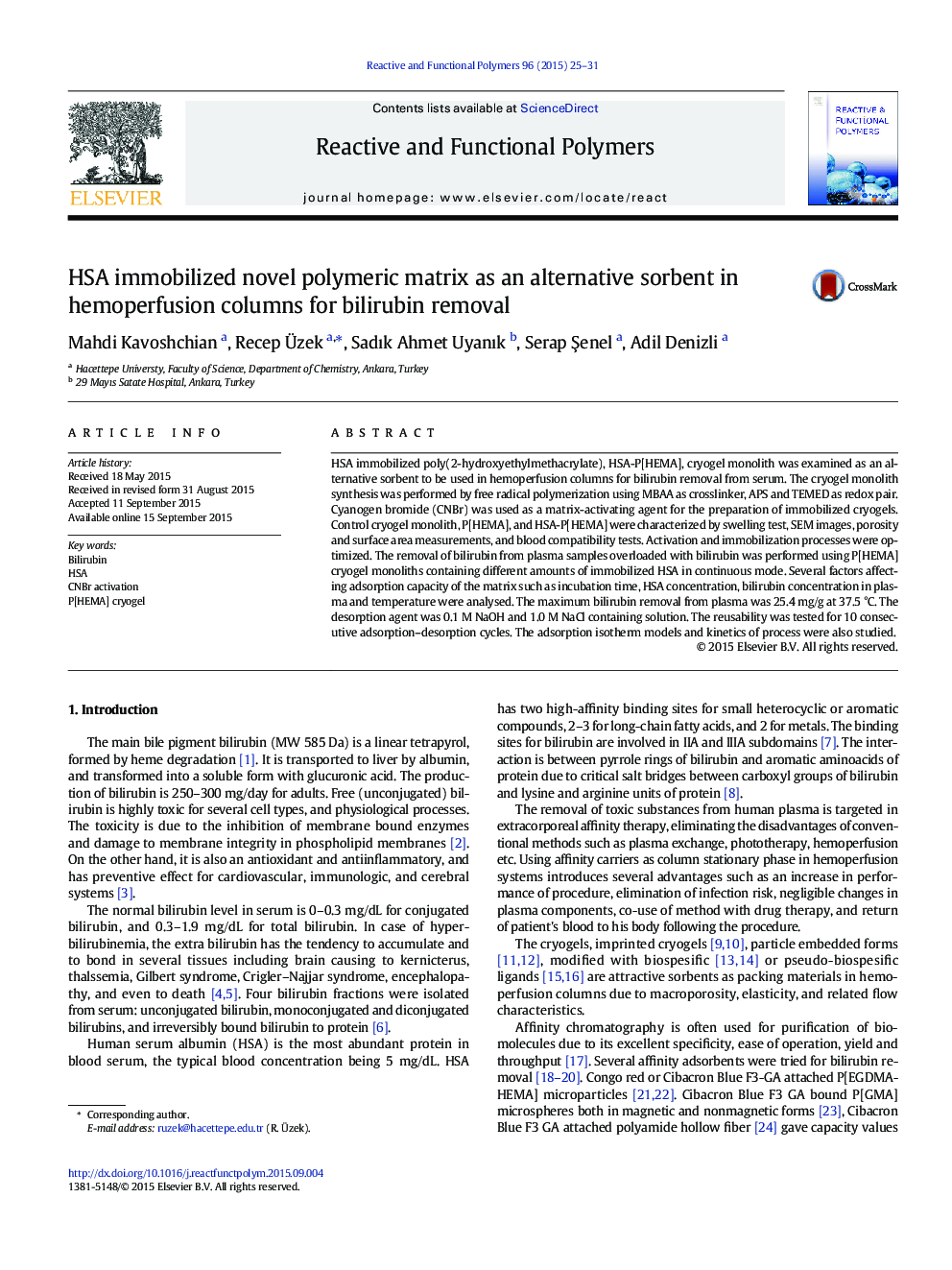| Article ID | Journal | Published Year | Pages | File Type |
|---|---|---|---|---|
| 5209641 | Reactive and Functional Polymers | 2015 | 7 Pages |
â¢HSA immobilized poly(2-hydroxyethylmethacrylate) monolithic cryogels were prepared as an alternative sorbent to be used in hemoperfusion.â¢The cryogels were examined for bilirubin removal from serum.â¢Optimum conditions such as incubation time, HSA concentration, etc. were determined for bilirubin removal from serum.â¢The adsorption isotherm models and kinetics of process were studied.
HSA immobilized poly(2-hydroxyethylmethacrylate), HSA-P[HEMA], cryogel monolith was examined as an alternative sorbent to be used in hemoperfusion columns for bilirubin removal from serum. The cryogel monolith synthesis was performed by free radical polymerization using MBAA as crosslinker, APS and TEMED as redox pair. Cyanogen bromide (CNBr) was used as a matrix-activating agent for the preparation of immobilized cryogels. Control cryogel monolith, P[HEMA], and HSA-P[HEMA] were characterized by swelling test, SEM images, porosity and surface area measurements, and blood compatibility tests. Activation and immobilization processes were optimized. The removal of bilirubin from plasma samples overloaded with bilirubin was performed using P[HEMA] cryogel monoliths containing different amounts of immobilized HSA in continuous mode. Several factors affecting adsorption capacity of the matrix such as incubation time, HSA concentration, bilirubin concentration in plasma and temperature were analysed. The maximum bilirubin removal from plasma was 25.4 mg/g at 37.5 °C. The desorption agent was 0.1 M NaOH and 1.0 M NaCl containing solution. The reusability was tested for 10 consecutive adsorption-desorption cycles. The adsorption isotherm models and kinetics of process were also studied.
